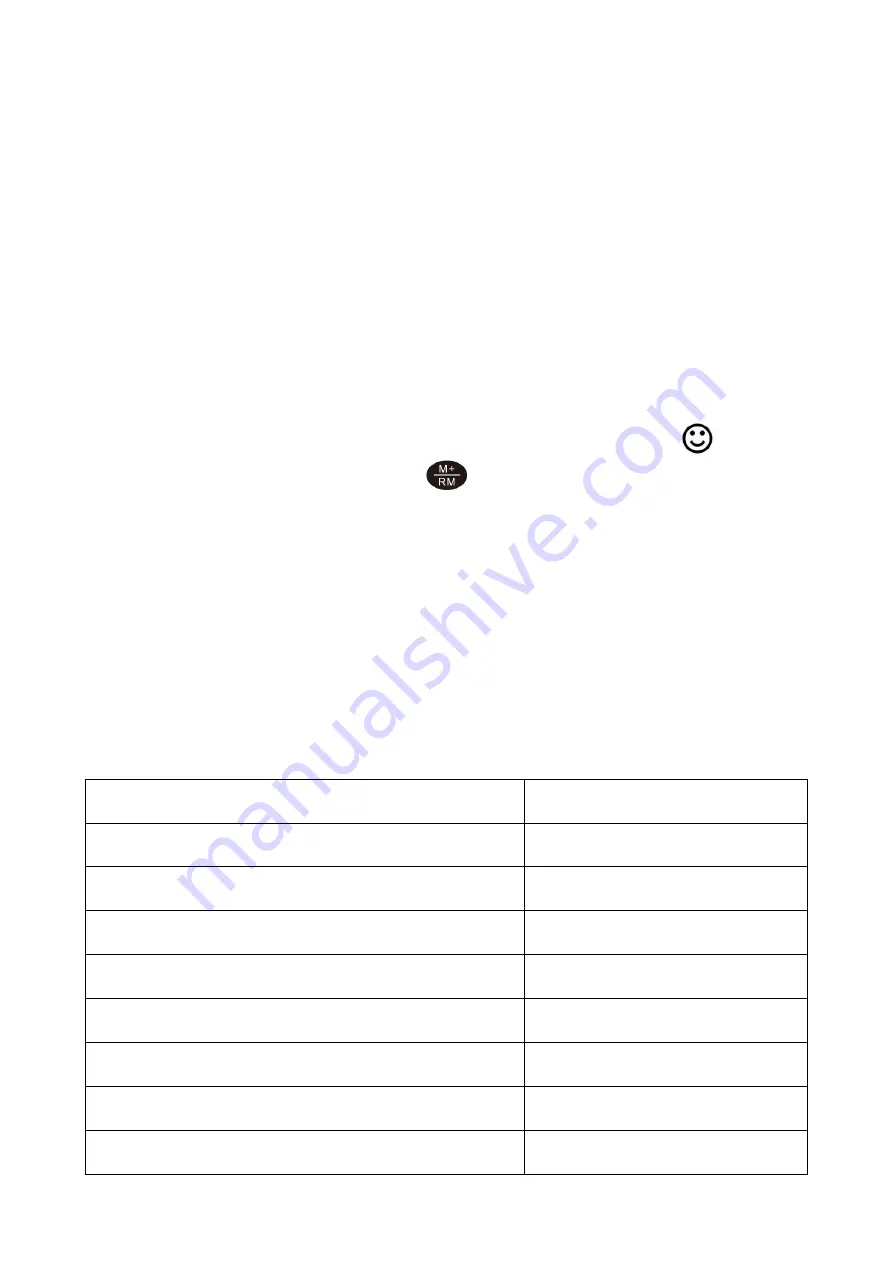
- 11 -
must be re-calibrated:
•
The electrode hasn’t been used for a long time or a new electrode is connected.
•
After measuring strong acid (pH<2) or strong base (pH>12) solutions.
•
After measuring fluoride-containing solution and strong organic solution.
•
There is a significant temperature difference between the test sample and the buffer solution.
6.4
Sample Test
Power on the meter. Connect the pH electrode and the meter goes to pH measurement mode
automatically. Screw off the KCL storage bottle. Rinse the electrode with pure water. Shake off excess
water or blot-dry with clean tissue or kimwipe. Stir the electrode for a few seconds after it’s dipped into
the sample solution and then hold it still. Wait for the reading to get fully stabilized ( appears and
stays). Then save the measurement by pressing
According to the pH isothermal measurement principle, the closer the test sample’s temperature is to the
calibration solution’s, the higher the accuracy of the measurement. This principle is recommended to
follow for the best result. For example, if you must test at 150˚F, we recommend warming up the
calibration solutions to the same temperature before performing calibration in order to get the most
accurate readings.
6.5
Recommended pH Electrodes for Different Applications
Application
Ideal Apera pH Electrodes
General water solutions
201T-S, LabSen 211, LabSen 213
Beverage, beer, wine
LabSen 211, LabSen 213
Low ionic strength solutions (RO water, distilled water,
deionized water…)
LabSen 801, LabSen 803
Liquid food (milk, cream, yogurt, jam, sauce, etc.)
LabSen 821, LabSen 823
High-Temperature solutions
LabSen 841, LabSen 861
Low-temperature liquid
LabSen881
High salinity solutions
LabSen 841
Complex and caustic solutions (e.g. electroplating)
LabSen 861












































